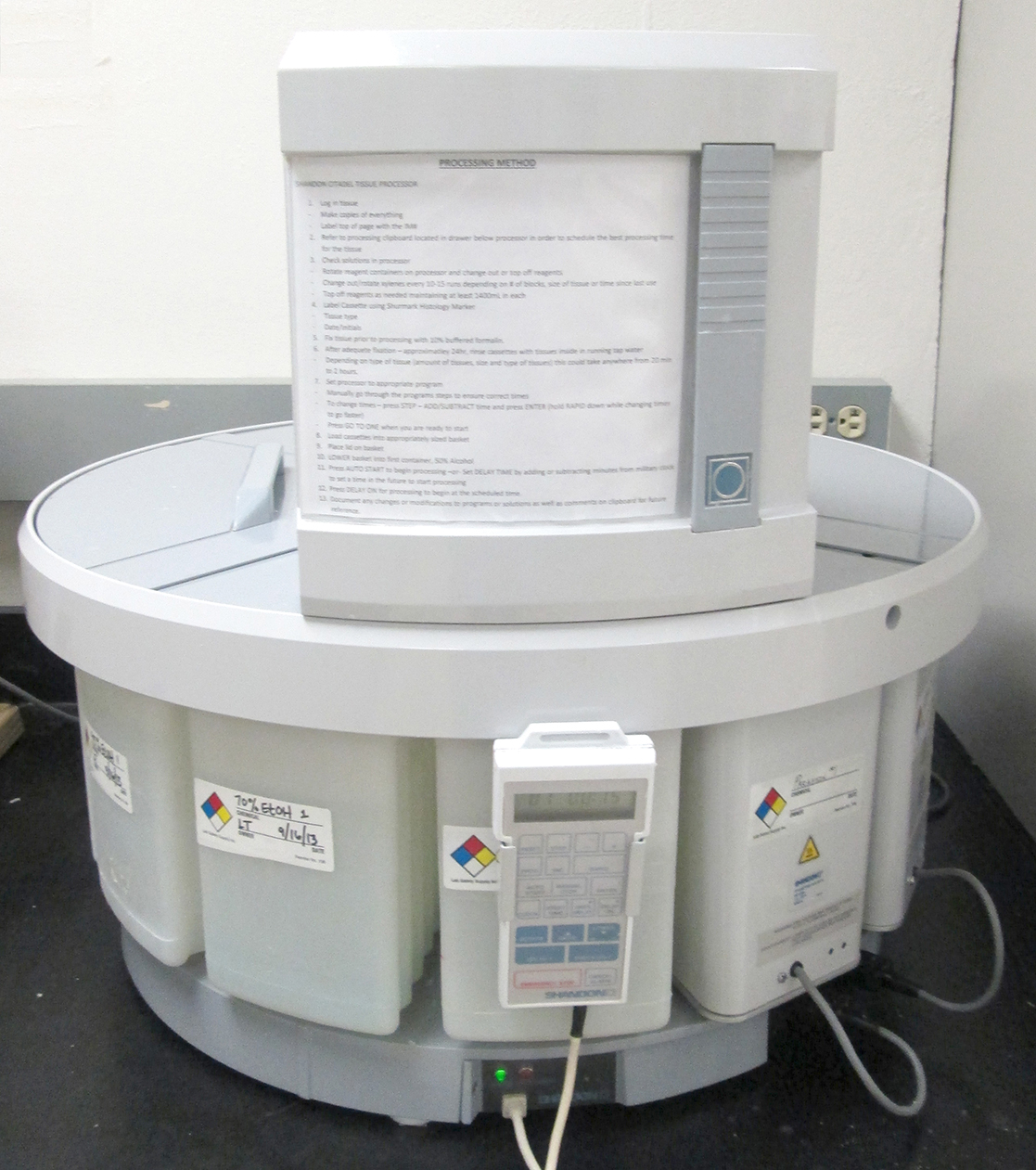Shandon Citadel 2000 Tissue Processor
Brief Description
 The Shandon Citadel 2000 tissue processor is an automatic tissue processor with a
rotary, carousel design. This processor has a circular, carousel arrangement of stationary
reagents and a rotating head. Tissue cassettes are loaded into a basket on the rotating
head where they are transferred sequentially around the series of reagent containers.
It has 9- 10 reagent baths and 2-3 wax positions, with a capacity of 30-110 cassettes.
Another feature of the automated tissue processor is the ability to provide fluid
agitation which is achieved by vertical oscillation or rotary motion of the tissue
basket. Processing schedules can be programmed according to the specific needs of
various tissues using a digital touch-pad. This allows maximum flexibility in the
choice of reagents as well as, the amount of time the tissue remains in each reagent
bath. Tissue transfer processors can accommodate a wide range of solvents, fixatives
and relatively viscous nitrocellulose solutions. These machines have a rapid turn-around
time for day/night processing.
The Shandon Citadel 2000 tissue processor is an automatic tissue processor with a
rotary, carousel design. This processor has a circular, carousel arrangement of stationary
reagents and a rotating head. Tissue cassettes are loaded into a basket on the rotating
head where they are transferred sequentially around the series of reagent containers.
It has 9- 10 reagent baths and 2-3 wax positions, with a capacity of 30-110 cassettes.
Another feature of the automated tissue processor is the ability to provide fluid
agitation which is achieved by vertical oscillation or rotary motion of the tissue
basket. Processing schedules can be programmed according to the specific needs of
various tissues using a digital touch-pad. This allows maximum flexibility in the
choice of reagents as well as, the amount of time the tissue remains in each reagent
bath. Tissue transfer processors can accommodate a wide range of solvents, fixatives
and relatively viscous nitrocellulose solutions. These machines have a rapid turn-around
time for day/night processing.
Click here to learn more about the Shandon Citadel 2000 Processor
Applications
This instrument is an essential component of the Histology Laboratory. The main goal of tissue processing is to remove any water present in the tissues and replace the water with a medium that will adequately support and solidify the tissue making it possible to cut thin sections on the microtome. More specifically, processing of tissues is completed during three stages, where each stage must be of sufficient length to ensure completeness.
- Dehydration –removes fixative and water from the tissue and replaces them with dehydrating fluid, typically ethanol.
- Clearing – replaces the dehydrating fluid with a fluid that is totally miscible with both the dehydrating fluid and the embedding medium.
- Infiltration – replaces the clearing agent with the embedding medium.
Paraffin wax is most often the embedding medium used for histology tissue preparation.
This wax renders the tissue firm enough to enable thin sections to be cut, at the
same time, the tissue is soft (not so hard) to enable the microtome knife to cut the
sections. The embedding medium has to thoroughly permeate the tissue in fluid form
so that it solidifies without any damage to the tissue.
